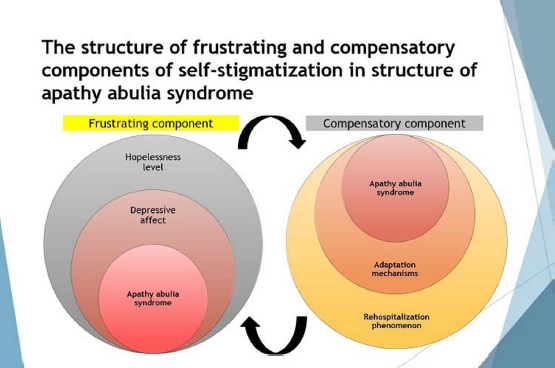No CrossRef data available.
Published online by Cambridge University Press: 15 April 2020
Interaction of processes of self-stigmatization and rehospitalization in structure of paranoid schizophrenia studied insufficiently well.
Studying of clinical psychological mechanisms of a self-stigmatization phenomenon at patients with paranoid schizophrenia.
Separate out a role of an affective component as key-factor in formation of a self-stigmatization phenomenon. Define a role of compensation mechanisms in formation of "learned helplessness” style.
Retrospective analysis of frequency of hospitalization by information from epicrisis, semiformalized interview, PANSS, the Beck Hopelessness Scale, the Zung Self-Rating Depression Scale, the State-Trait Anxiety Inventory.
The group of patients with an apathy abulia syndrome 65 % is prevailing. We had been found out valid connection between intensity of apathy abulia syndrome in structure of paranoid schizophrenia and frequency of hospitalization 0,60 (p <0,01).
Basis of the frustrating component at an apathy abulia syndrome is personal reaction to a clinical syndrome, which reflected, in the affective sphere of the patient in the depressive affect and the increasing hopelessness level.

With increase of negative symptomatology also increases tensity of adaptation mechanisms 0,88 (p<0,01). The prevailing negative symptomatology perhaps predispose to development of a rehospitalization phenomenon 0,53 (p<0,01).
Rehospitalization phenomenon is one of the main behavioral equivalents indicating to self-stigmatization process, fixing and reproducing the process intensifies apathy abulia syndrome.
Comments
No Comments have been published for this article.